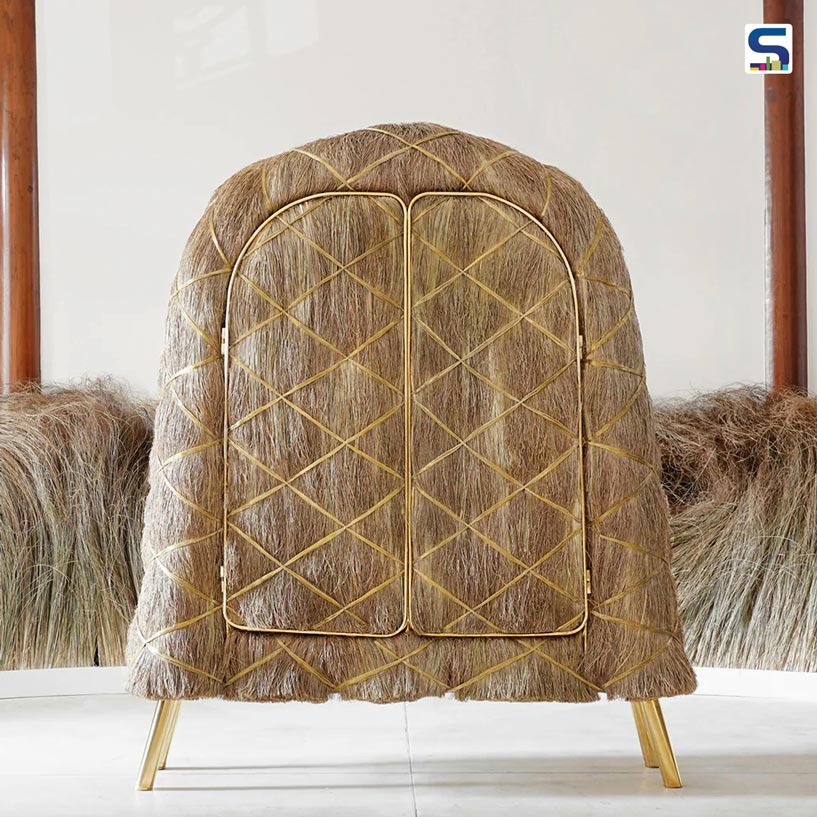
In a landmark collaboration that bridges continents and cultures, æquo, India’s first collectible design gallery, has joined hands with Estudio Campana to unveil the Atuxuá cabinet. More than a piece of furniture, the cabinet is a celebration of shared traditions, artisanal excellence and the transformative potential of design as a cultural dialogue. Know on SURFACES REPORTER (SR) how this cabinet stands apart yet brings two nations together.

The cabinet, produced in Jaipur at æquo’s partner workshop Frozen Music, is named after Atuxuá masks, which are indigenous Brazilian objects celebrated for their intricate detailing and symbolic depth.
Roots and rituals in design
Founded by Tarini Jindal Handa, æquo has carved a niche as a unique platform dedicated to showcasing India’s artisanal heritage while fostering collaborations with contemporary designers from around the world, while under the curatorial vision of creative director Florence Louisy, the gallery has become a stage where global design meets the craftsmanship of India. For Estudio Campana, this collaboration aligned seamlessly with their ethos. Founded by brothers Humberto and the late Fernando Campana, the Brazilian design studio has, for over four decades, reimagined everyday objects and scenes into sculptural creations that reflect the vibrancy of their homeland. The Atuxuá cabinet is a natural extension of this philosophy, reinterpreted in an Indian context.
At the heart of this collaboration lies the desire to explore common ground between India and Brazil, two countries deeply connected through their traditions of craft, spirituality and reverence for the natural world. Humberto Campana immersed himself in India’s history, techniques and raw materials to create a piece that embodies these shared sensibilities. The cabinet, produced in Jaipur at æquo’s partner workshop Frozen Music, is named after Atuxuá masks, which are indigenous Brazilian objects celebrated for their intricate detailing and symbolic depth. This naming acknowledges Brazilian heritage while drawing parallels with India’s own rich tradition of ritualistic objects.

Upon opening the cabinet doors, the raw exterior gives way to a polished brass interior, a gleaming contrast that amplifies its dual character of earthy yet refined, sophisticated look.
Indian design meets Brazilian innovation
Materiality is at the core of the Atuxuá cabinet. It employs Sabai grass, a natural fibre native to India, known for its resilience and earthy beauty. Traditionally used in weaving and craft, Sabai grass becomes the expressive skin of the cabinet, its wild texture forming a dramatic coat over a solid brass structure. Each blade of grass is painstakingly sewn onto a bamboo lattice using delicate brass wires, echoing the centuries-old practice of bundling grass for trade. This meticulous process took weeks of handwork, recreating the dense mass of Sabai grass at harvest.
 Traditionally used in weaving and craft, Sabai grass becomes the expressive skin of the cabinet, its wild texture forming a dramatic coat over a solid brass structure.
Traditionally used in weaving and craft, Sabai grass becomes the expressive skin of the cabinet, its wild texture forming a dramatic coat over a solid brass structure.
Upon opening the cabinet doors, the raw exterior gives way to a polished brass interior, a gleaming contrast that amplifies its dual character of earthy yet refined, sophisticated look. This interplay captures the essence of cross-cultural design of honoring origins while embracing modernity. According to Humberto Campana, the intricacy of the Sabai grass and the metalwork represents a parallel path between the spirituality, rituals and religious syncretism that we can find both in India and Brazil. The Atuxuá cabinet is, therefore, more than an object; it is a dialogue in design. By weaving together Sabai grass, brass and bamboo into a singular form, the cabinet symbolizes a union of craft, culture and contemporary design thinking.
Image credit: æquo